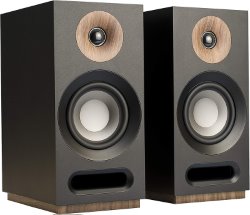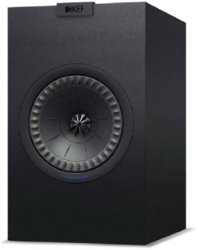Jamo S 803 vs. KEF Q150
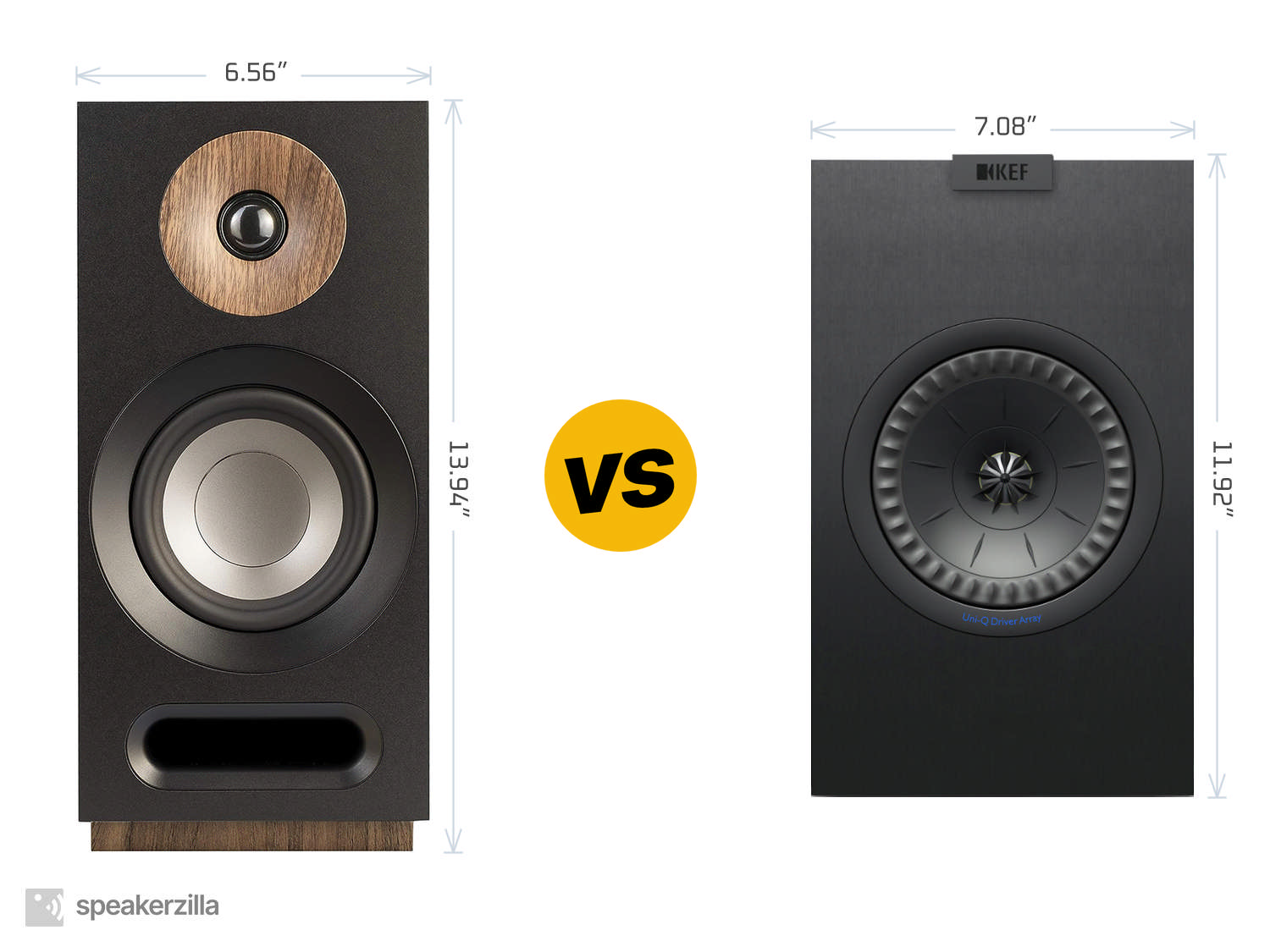
| Jamo S 803 Bookshelf Speakers | KEF Q150 Bookshelf Speakers |
| MSRP | |
| $330 | $600 |
| Dimensions (H × W × D) | |
|
13.94” × 6.56” × 9.94” 354mm × 167mm × 252mm |
11.92” × 7.08” × 10.94” 303mm × 180mm × 278mm |
| Power Type | |
| Passive | Passive |
| Frequency Response | |
| 57-26,000 Hz | 51-28,000 Hz |
| ASR Score | |
| n/a | 4.8 |
| ASR Score w/Subwoofer | |
| n/a | 6.9 |
|
Amazon.com
|
Amazon.com
|
Key Takeaways
TLDR Summary: In the realm of affordable high-fidelity, the Jamo S 803 and KEF Q150 bookshelf speakers represent two distinct philosophies. The Jamo S 803 offers a stylish, modern design with a lively sound signature, appealing to those seeking both visual flair and auditory excitement. Conversely, the KEF Q150 champions audio purity with its Uni-Q driver, delivering a more neutral and expansive soundstage. The choice between them isn't merely about budget—it's a question of taste: the exuberant energy of the Jamos or the refined, articulate delivery from KEF. Each sets a benchmark in its approach to accessible audiophile performance.
Speaker Comparison
When it comes to selecting the right speakers for your soundstage, it’s not just about volume or brand prestige; it’s about the intricacies of sound and how they can color your auditory experience. Two particular models that offer distinct listening experiences are the Jamo S 803 and the KEF Q150 bookshelf speakers. Each brings its own flavor to the table, embodying different philosophies in sound reproduction. In the world of audiophiles, the battle between these two contenders is not just a matter of better or worse, but rather a discussion of personal preference and suitability for specific environments.
Design Aesthetics and Build Quality
The Jamo S 803 speakers exude a modern and almost minimalist Scandinavian design, with their clean lines and wood accents that can blend effortlessly into contemporary decor. The build quality is solid, though the vinyl finish might lack the prestige of more expensive wood veneers. On the other hand, the KEF Q150s boast a more traditional look with their unadorned, boxy shape. They are available in a variety of finishes that give a higher-end feel. The KEF's patented Uni-Q driver array, which mounts the tweeter concentrically within the midrange/bass cone, gives it a distinctive appearance that is often associated with the brand's innovative approach to speaker design.
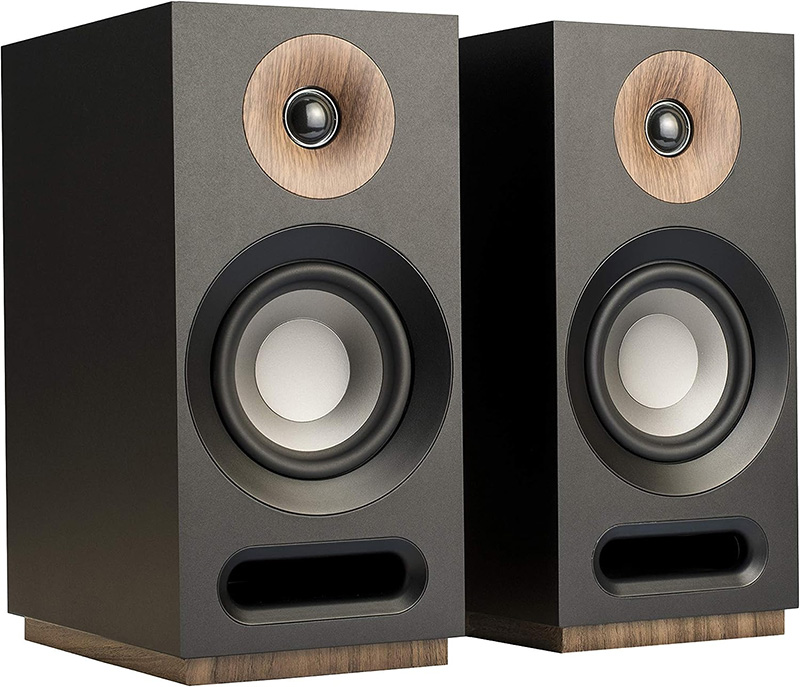
 (at Amazon.com)
(at Amazon.com)Sound Quality – The Jamo S 803
The Jamo S 803 speakers are renowned for their lively and robust sound profile. They offer a generous bass response for bookshelf speakers, thanks to the rear-firing bass port, which can create an engaging and toe-tapping listening experience. The highs are crisp, and the mids are clear, though they might not exhibit the same level of finesse that more expensive speakers provide. These speakers perform exceptionally well at higher volumes, making them suitable for those who like to fill the room with sound. However, the bass port's placement means these speakers do need space from the rear wall to breathe, which might not suit all room arrangements.
Sound Quality – The KEF Q150
In contrast, the KEF Q150 speakers take a more refined approach. The Uni-Q driver provides a wide dispersion of sound, creating a larger sweet spot and consistent tonal balance throughout the room. The bass is tight and more controlled compared to the Jamo S 803, and the Q150s excel in delivering detailed midranges and smooth treble. This precision makes them ideal for critical listening sessions. The overall sound signature is one of clarity and neutrality, aiming to reproduce the audio material with as little coloration as possible, which is a hallmark of KEF's design philosophy.
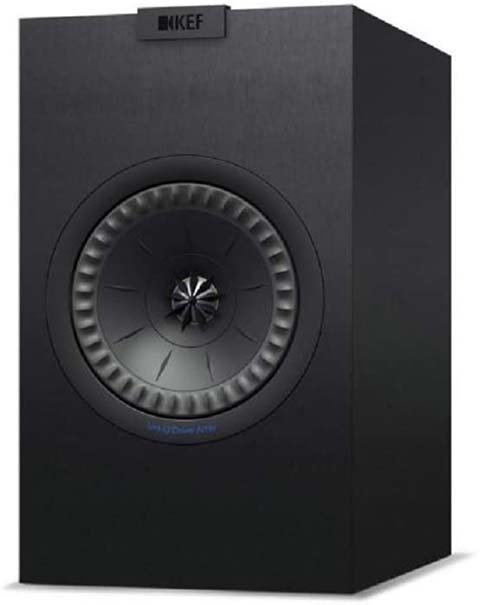
 (at Amazon.com)
(at Amazon.com)Value and Versatility
Value is another critical component to consider in the choice between these two. The Jamo S 803s are often positioned as an excellent entry-point into the world of high-fidelity audio, offering a compelling price-to-performance ratio. They are relatively forgiving in terms of amplification, which means they can be paired with a wide range of equipment without compromising quality. Conversely, the KEF Q150s, while more expensive, justify their price with their audiophile-grade sound. They are less forgiving and may require a more careful selection of accompanying electronics to truly shine, perhaps making them more suited to the seasoned audiophile with a higher budget for system matching.
Compare to similar speakers
Room Considerations
Room dynamics play a significant role in speaker performance. The Jamo S 803 speakers need breathing room due to their rear-firing ports, so they might not be the best choice for tighter spaces or for placement close to walls. On the other hand, the KEF Q150s have a front-firing port, which grants them more flexibility in placement. They can perform well even when placed on a bookshelf or close to a wall, making them more adaptable to various living spaces and listening environments.
Ultimately, the choice between the Jamo S 803 and the KEF Q150 bookshelf speakers comes down to personal preference and the characteristics of the listening space. Whether you prefer the energetic and room-filling sound of the Jamos or the precise and articulate nature of the KEFs, each set of speakers has the potential to deliver a satisfying listening experience. What's crucial is understanding the sound profile you enjoy, the type of media you consume, and how the speakers interact with the acoustics of your chosen environment.
- Jamo S 803 reviews and FAQs
- KEF Q150 reviews and FAQs
Check Current Prices: |
|
|
Amazon.com
|
Amazon.com
|
Affiliate Disclosure: As an Amazon Associate, we earn from qualifying purchases.
